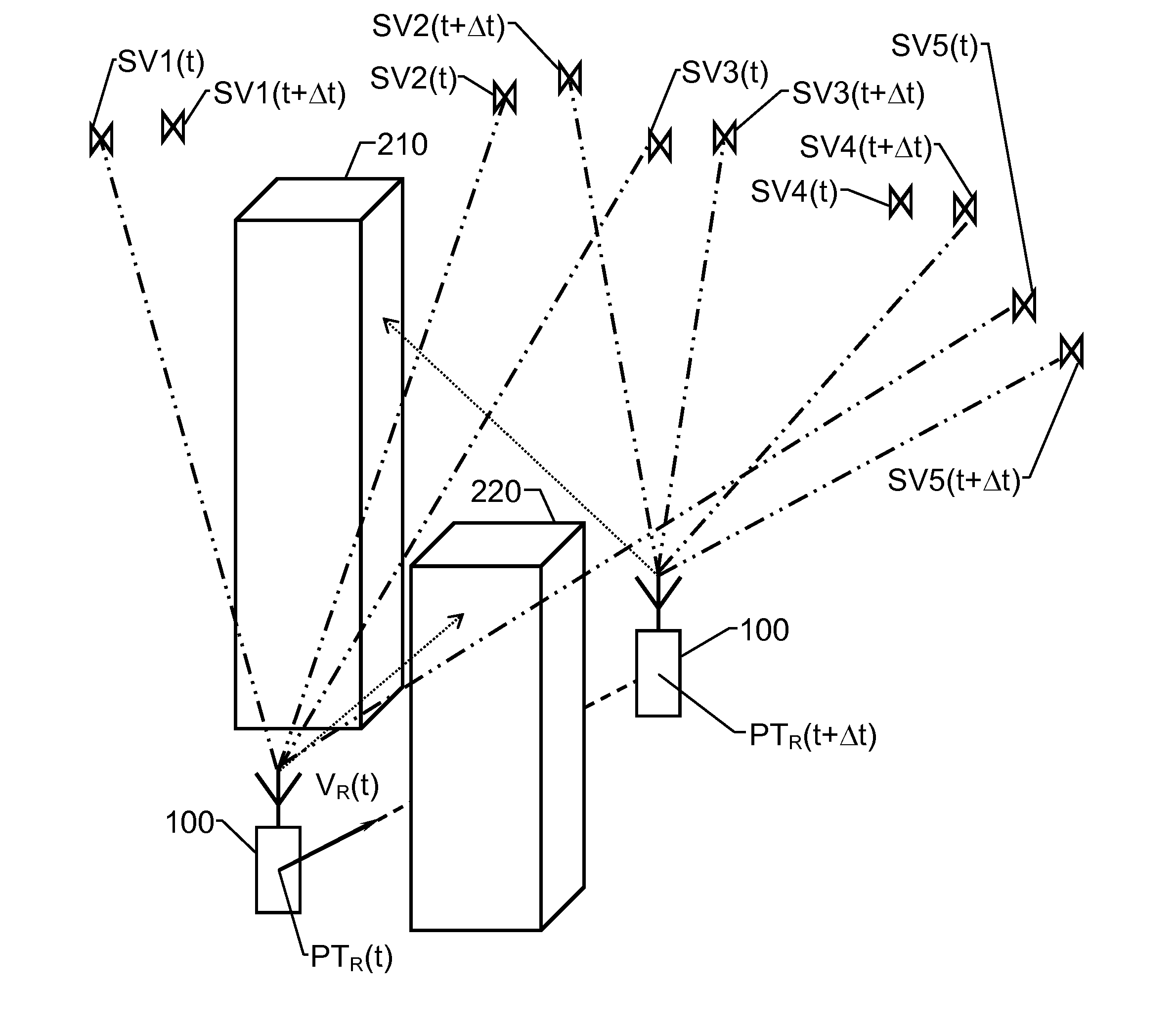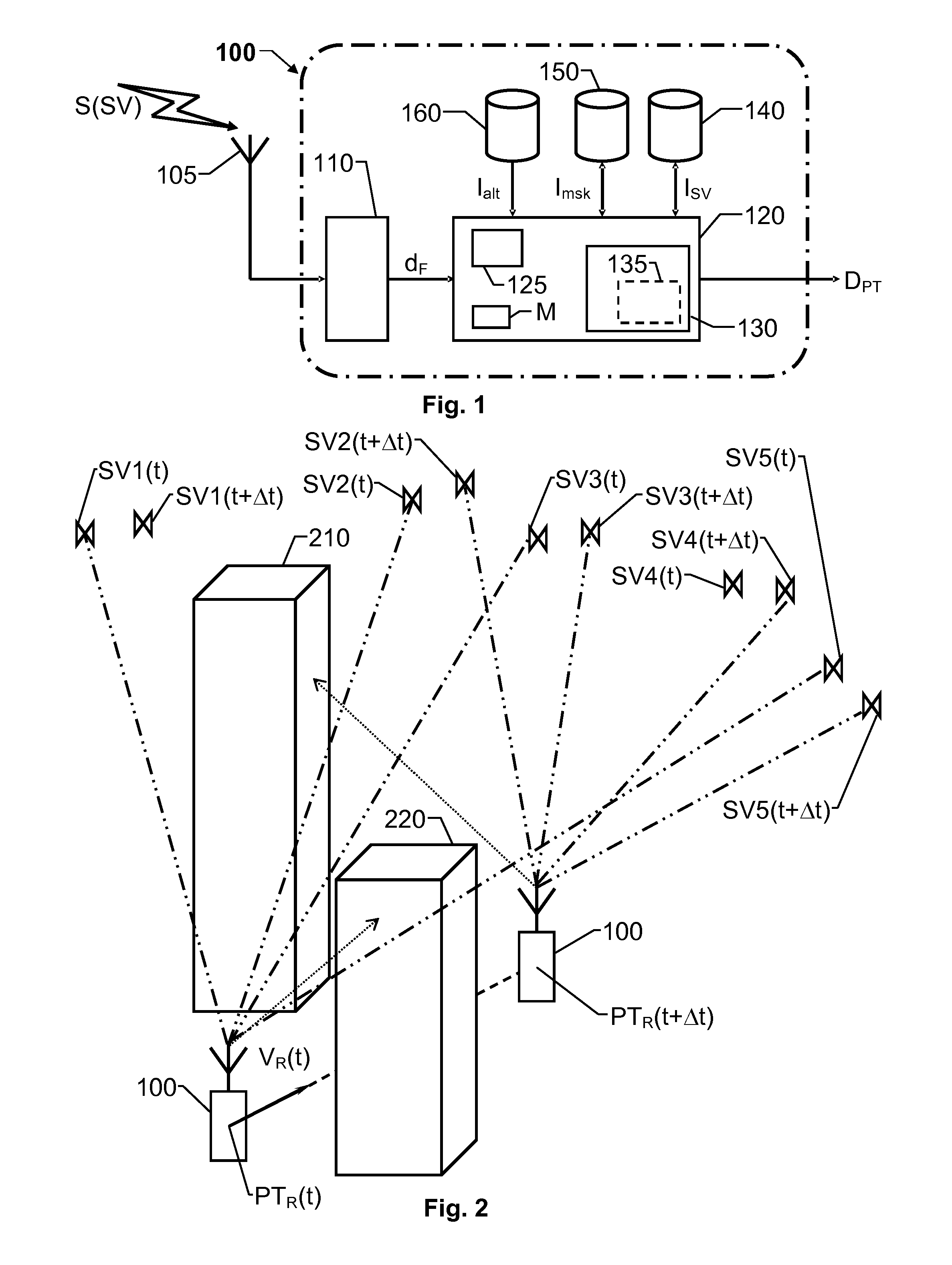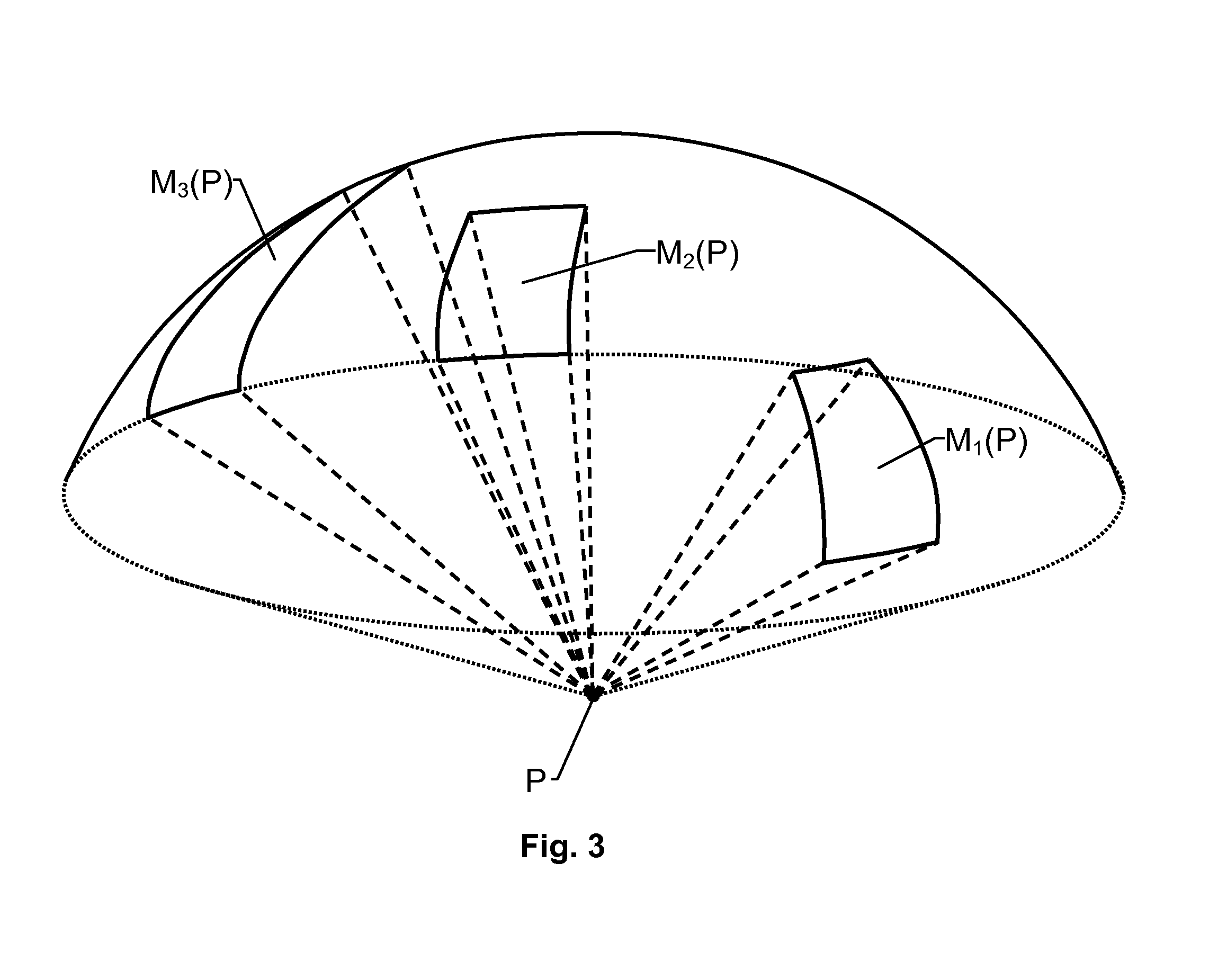GNSS receiver and operating method
a receiver and operating method technology, applied in satellite radio beaconing, measurement devices, instruments, etc., can solve the problems of affecting the navigation accuracy of the receiver, the signal from one or more signal sources may be completely blocked, and the radio conditions may be drastically altered, etc., to achieve the effect of reducing the difficulty of gnss navigation, and improving the accuracy of the signal
- Summary
- Abstract
- Description
- Claims
- Application Information
AI Technical Summary
Benefits of technology
Problems solved by technology
Method used
Image
Examples
Embodiment Construction
[0026]We refer initially to FIGS. 1 and 2, which show a block diagram of a GNSS receiver 100 according to one embodiment of the invention respective a group of signal sources and the receiver at two different positions / times.
[0027]The proposed receiver 100 is adapted to process radio signals S(SV) transmitted from an active set of signal sources and based thereon produce position / time related data DPT. Here, we assume that at a first position / time PTR(t), the active set includes a first signal source SV1, a second signal source SV2, a third signal source SV3 and a fifth signal source SV5. The receiver 100 has a tracking channel resource for each signal source in the active set, and the tracking channel resources are configured to process the radio signals S(SV) in parallel with respect to a real-time signal data rate of the signals.
[0028]The proposed receiver 100 includes a signal-source database 140, a signal-masking database 150 and a control unit 130. The signal-source database 1...
PUM
 Login to View More
Login to View More Abstract
Description
Claims
Application Information
 Login to View More
Login to View More - R&D
- Intellectual Property
- Life Sciences
- Materials
- Tech Scout
- Unparalleled Data Quality
- Higher Quality Content
- 60% Fewer Hallucinations
Browse by: Latest US Patents, China's latest patents, Technical Efficacy Thesaurus, Application Domain, Technology Topic, Popular Technical Reports.
© 2025 PatSnap. All rights reserved.Legal|Privacy policy|Modern Slavery Act Transparency Statement|Sitemap|About US| Contact US: help@patsnap.com



